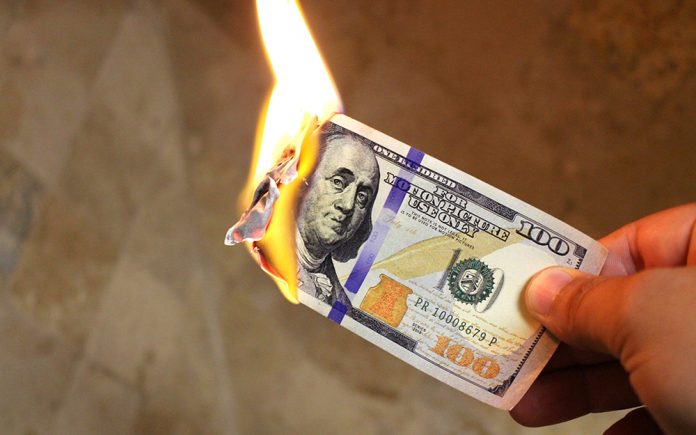
By Haddon Libby
Fixed income investors who have not yet begun to contemplate the low returns in an inflationary world need, better get started. With a 10 year Treasury at 1.6% and an inflation rate of 4% excluding fuel and fuel, and a Federal Reserve that is in no hurry to slow the post-pandemic economic activity, challenges related to bond investing is just getting started.
Since the pandemic struck, the Federal Reserve has purchased $7.8 trillion in government and corporate debt. By taking these debt obligations out of circulation, the interest rates paid by borrowers is significantly lower than would have been the case if the Fed had been less proactive. By keeping interest rates down, companies that could have gone bankrupt during the pandemic were able to issue debt at extremely favorable rates and survive. This meant fewer people were unemployed as a result. It also meant that those relying on the fixed income provided by bonds earned less.
What happens when the Federal Reserve and U.S. Treasury stop buying bonds? Logic tells us that interest rates will go up.
While this will be welcomed by investors, higher rates cause existing bond values to go down in value. This means that if you hold the bond until maturity, the loss is essentially an opportunity cost. The opportunity cost is that you would be getting a return that is below the market for the length of the investment. If you sell the bond prior to maturity, that loss opportunity is realized. Earlier this year, a 0.6% increase in long-term rates caused a 10% loss in the value of the underlying bonds. If you own a bond fund, these losses are initially felt with a decline in value that is eventually offset by higher returns.
If we use the 5 and 10 year Treasuries as our benchmarks or base cases, returns are 0.8% annually for the 5 year and 1.6% for the 10 year. This return on investment is less than the inflation rate meaning that the real value of these investments is declining when you consider the buying power of the underlying currency.
The Federal Reserve refers to recent price increases as “transitory” and due to pent-up demand and shortages caused by the pandemic. While extraordinarily large relief and stimulus at the federal level has done its job in keeping the economy together, the clear consequence is and will continue to be inflation.
The Federal Reserve has also been adamant in stating that they are “not even thinking about thinking about” increasing rates. This makes sense as they must discontinue asset purchases first.
For investors in bonds, this current scenario means that you are essentially getting a negative return on your money as inflation chews up any interest that you might receive from the purchase of a new bond. Higher inflation means that you need to earn a higher return just to stay even yet Federal Reserve policies have created this negative return environment that is more favorable to borrowers than investors.
What does an investor do when an existing bond holding matures?
Some extend duration risk. This means that they replace a 5 year bond with a 30 year bond in order to earn more interest income today. Others buy riskier and riskier debt – this is referred to as taking on greater default or repayment risk. Both strategies work well so long as the economy remains strong and Federal Reserve interventionist policies remain in effect.
As it is highly unusual to have the intersection of easy money and a strong economy, we must be prepared for a time when interest rates are higher, and the economy is not doing as well. When that day comes, the value of bonds with long maturities or poor credit quality will fall quickly unless the Federal Reserve intervenes in a massive way as we are currently experiencing.. As we saw when rates rose by a mere 0.6% earlier this year, long-dated bonds fell in value by 10%.
When rates are manipulated to be this low despite heightened risks, Investors are better served by reducing the duration of their investment portfolios and considering the use of dividend paying equities as replacements.
Reducing duration means that the investor who had a 5 year bond mature might replace it with a two year bond fund. While the return stinks, the risk of loss is mitigated while the investor waits for higher rates.
The use of dividend paying stocks is another useful strategy until market conditions normalize. Like bonds, the companies paying higher dividends are more often more risky than those paying a lower dividend yield. When using this strategy, make sure that the companies you invest in can afford to pay the dividend, invest in the company and pay taxes.
Haddon Libby is the Founder and Chief Investment Officer at Winslow Drake Investment Management, winner of Small Business of the Year by the City of Cathedral City Chamber of Commerce. For more information, please visit www.WinslowDrake.com or email Hlibby@WinslowDrake.com










































